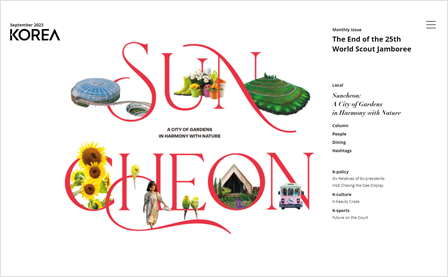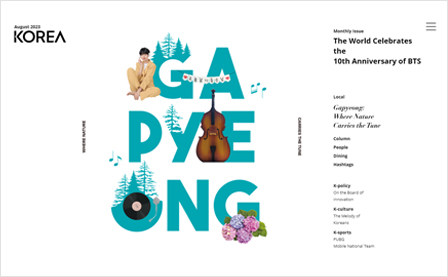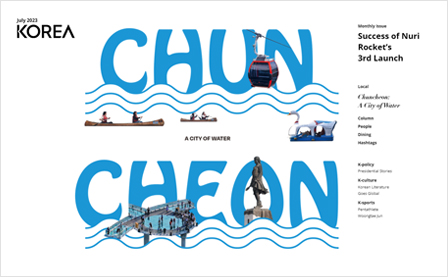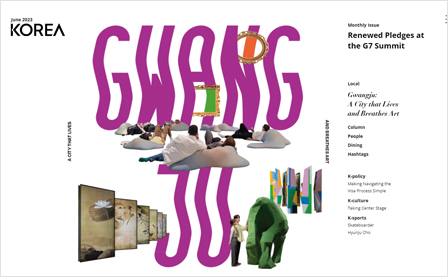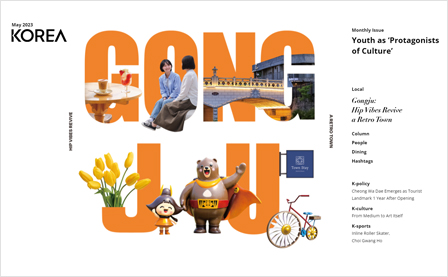October 2023

ESG Report

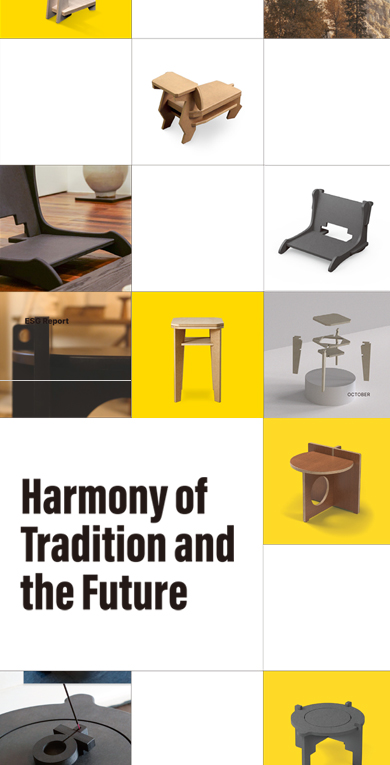
Photos Courtesy of Cuppa House
Abandoned Furniture
“During my time studying abroad in the U.K., I used to observe my friends opting for tumblers or mugs when having tea, and I once inquired, ‘Isn’t it less convenient to use reusable items instead of disposables?’ Their response was somewhat unexpected―they said, ‘Despite the slight inconvenience, we endure it for the sake of the environment.’ They were usually quite playful. However, their serious concern for the environment and their willingness to endure discomfort were shocking,” Park said. That’s when he first started seriously thinking about eco-friendliness.
His senior project naturally took a turn towards eco-friendliness as well. Back then, he presented an eco-friendly lighting project as his senior project, and that was when he became aware of abandoned furniture. Due to components like adhesives, nails, and fasteners making disassembly difficult, many wooden pieces of furniture couldn’t be recycled and were being discarded. It was then that he embarked on a quest to find a solution.
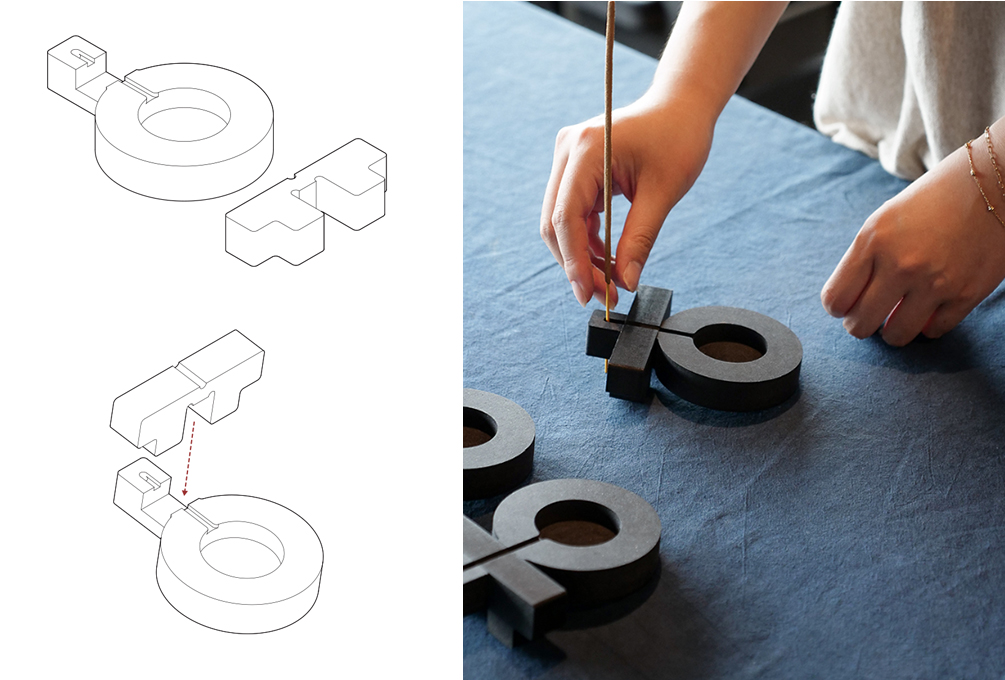 Incense stick holder designed to resemble the Korean consonant ‘ㅎ.’ It is composed of two parts for easy assembly and disassembly, and is designed to be placed inside the circular part of the ‘ㅎ’ character.
Incense stick holder designed to resemble the Korean consonant ‘ㅎ.’ It is composed of two parts for easy assembly and disassembly, and is designed to be placed inside the circular part of the ‘ㅎ’ character.Finding Answers in Tradition
The materials used in furniture production are diverse, and among them, natural wood stands out as the most environmentally friendly choice. For Park who contemplated ways to minimize waste and enhance recyclability while creating furniture with natural wood, an unexpected solution emerged. It came from a traditional method―when crafting traditional furniture in Korea, artisans employ the “interlocking joint technique.” This technique involves fitting pieces of wood together without the use of adhesives or nails. Park remarked, “Compared to furniture assembled with adhesives or nails, the assembly and disassembly process is much simpler, and the work itself is enjoyable. I also found great satisfaction in the visual stability and structural integrity inherent in the interlocking structure.”
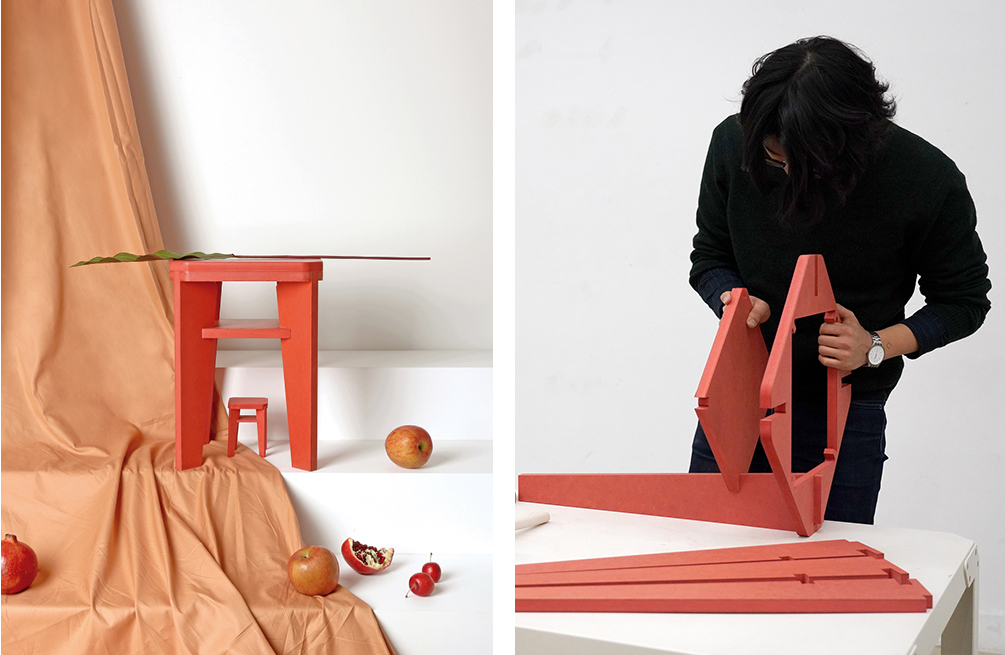 (Left) The table from the ‘A Series,’ Cuppa House’s very first release.
(Left) The table from the ‘A Series,’ Cuppa House’s very first release.(Right) All furniture from Cuppa House is delivered in a disassembled state, making it easy for customers to assemble themselves. Screws or adhesive are not required during the assembly process.
One Stop from Design to Distribution
At the point where wood intersects using the interlocking joint technique, unique design traits become apparent. In traditional furniture, these intersection points are carefully adjusted to form a flat surface. Nonetheless, in Cuppa House’s interlocking joint method, the intersection patterns are faithfully maintained―preserving the interplay between surfaces. Additionally, in their newest chair and table products, they have ingeniously integrated the design aspects of intersection points inherent in the interlocking joint technique by stylizing Korean consonants, “ㄴ” and “ㅇ.”
At Cuppa House, every piece of furniture goes through the hands of Park―from design and production to distribution. “Initially, we outsourced all the processes,” Park shared. “However, it wasn’t as easy as it seemed. Balancing quality often led to delivery delays, while pushing for on-time deliveries occasionally impacted quality, which led to significant losses. Eventually, I decided to take matters into my own hands and said, ‘Let me just make it myself!’”
They converted their workshop into a studio and invested in CNC machines, which ensure precise cutting and defect reduction through computer control. This allows them to offer eco-friendly, customizable furniture at affordable prices, departing from the costly, mass-market designs commonly seen in eco-conscious workshops.
Compelling Products with Good Intentions
“Cuppa House”―which translates to “A Cup of Your House”―encapsulates Park’s longing for a moment of leisure amidst life’s hustle and bustle, where one can savor a cup of tea. Recently, they have been gearing up for the next phase in realizing this original vision. Operating under the local brand “MASANAI,” based in Masan, they are in the process of developing innovative items. Simultaneously, they are advancing their eco-friendly wooden DIY brand called “Excello Makers,” a platform open to local manufacturers. Their objective is to craft educational tools suitable for home use, aiming to reduce waste by preventing them from being discarded after just one lesson. Park emphasized, “Our aspiration is for all the brands we establish to make a meaningful contribution to the world, conveying profound content and messages. We do not intend to churn out ‘uninspiring products’ based solely on ‘good intentions’; rather, we strive to create captivating products that consumers are eager to invest in, all while continually enhancing our capabilities.”
Anticipation builds for what he will bring in the forthcoming days as he forges an “alluring lifestyle” containing the notion of “taking a moment for a cup of tea.”
 View of all
View of all